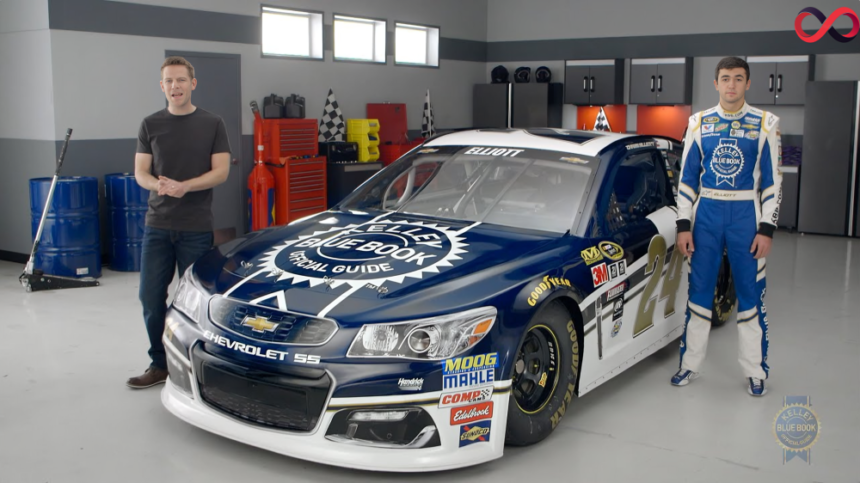When it comes to evaluating the value of a vehicle, Kelley Blue Book (KBB) has become a trusted resource for millions of car owners, buyers, and sellers. With decades of experience, KBB offers detailed insights into car values, pricing trends, and market data. This article provides a comprehensive guide to Kelley Blue Book, helping you understand how it works and why it’s an essential tool for automotive decisions.
What is Kelley Blue Book?
Kelley Blue Book is a renowned vehicle valuation and automotive research company that provides pricing information for new and used cars, trucks, SUVs, motorcycles, and other vehicles. Founded in 1926, KBB has established itself as a leading authority on vehicle pricing.
The Purpose of Kelley Blue Book
The primary objective of KBB is to:
- Provide Accurate Valuations: Help users understand the market value of a vehicle.
- Guide Pricing Decisions: Assist buyers and sellers in negotiating fair prices.
- Offer Market Insights: Present trends in vehicle pricing and demand.
How Does Kelley Blue Book Work?
KBB uses a combination of proprietary algorithms, real-world data, and industry insights to determine vehicle values. Here’s how the process unfolds:
1. Data Collection
KBB collects data from various sources, including:
- Dealership transactions
- Wholesale auctions
- Private sales
- OEM pricing
- Vehicle condition reports
2. Algorithmic Analysis
Once the data is collected, KBB applies advanced algorithms to evaluate factors like:
- Vehicle age and mileage
- Regional market conditions
- Seasonal trends
- Supply and demand dynamics
3. Valuation Types
Kelley Blue Book provides several types of values, including:
- Trade-In Value: The estimated amount a dealer will offer for your car.
- Private Party Value: The expected price in a private sale.
- Retail Value: The suggested price for a dealer sale.
- Certified Pre-Owned Value: Pricing for certified pre-owned vehicles.
Why is Kelley Blue Book Trusted?
Kelley Blue Book is highly regarded for its:
- Transparency: KBB explains how values are calculated, ensuring users understand the process.
- Accuracy: Its extensive database and algorithms provide reliable estimates.
- Relevance: KBB adapts to changing market conditions, making its data current and applicable.
How to Use Kelley Blue Book
Using KBB is straightforward, and the platform offers multiple tools for both buyers and sellers.
1. For Buyers
- Research New Cars: Access information on MSRP (Manufacturer’s Suggested Retail Price), dealer invoice prices, and incentives.
- Compare Vehicles: Evaluate features, specs, and pricing to make informed decisions.
- Estimate Costs: Use the KBB Cost-to-Own tool to project ownership expenses like insurance, fuel, and maintenance.
2. For Sellers
- Determine Trade-In Value: Get an idea of what a dealer might offer for your car.
- Set Private Party Prices: Use KBB’s Private Party Value to price your vehicle competitively.
- Enhance Listings: Leverage KBB’s reputation to add credibility to your vehicle listing.
Factors Influencing Kelley Blue Book Values
Several variables affect the values provided by KBB:
1. Vehicle Condition
Vehicles are categorized into conditions like Excellent, Very Good, Good, Fair, and Poor. A well-maintained car with fewer defects will have a higher value.
2. Mileage
High mileage reduces a car’s value, while lower mileage often increases it.
3. Location
Regional factors like climate and demand significantly impact vehicle pricing. For example, convertibles might fetch higher prices in warmer regions.
4. Market Trends
Shifts in supply and demand, as well as economic conditions, influence vehicle values. For instance, fuel-efficient cars may become more desirable during fuel price hikes.
Advantages of Kelley Blue Book
KBB stands out due to its:
- Comprehensive Database: Covers a wide range of vehicles, including niche categories.
- User-Friendly Interface: Simplifies the process of finding and comparing values.
- Educational Resources: Offers tips, articles, and tools to educate users.
Limitations of Kelley Blue Book’s
While Kelley Blue Book is a valuable resource, it’s important to consider its limitations:
- Subjective Inputs: Vehicle condition assessments can vary between users.
- Market Fluctuations: Rapid market changes may not be immediately reflected in KBB values.
- Regional Discrepancies: Some regional data may not align with local market conditions.
Kelley Blue Book’s Alternatives
Though KBB is a leading resource, other tools can complement your research:
- Edmunds: Provides detailed vehicle pricing and reviews.
- NADA Guides: Focuses on trade-in values for dealerships.
- CarGurus: Offers market analysis and dealership ratings.
Tips for Maximizing Kelley Blue Book’s Values
To get the best deal using KBB:
- Maintain Your Vehicle: Regular maintenance and repairs keep your car in good condition.
- Accurately Describe Condition: Provide honest and detailed information when using KBB tools.
- Monitor Market Trends: Keep an eye on trends that may affect vehicle demand.
- Leverage Seasonal Opportunities: Sell or buy vehicles during periods of higher demand or discounts.
FAQs
1. What is the difference between Kelley Blue Book’s and NADA Guides?
While both provide vehicle valuations, KBB focuses on consumer-based pricing, whereas NADA Guides are dealer-centric.
2. Can Kelley Blue Book’s values be negotiated?
Yes, KBB values serve as a guideline, and actual prices may vary based on negotiations and market conditions.
3. Is Kelley Blue Book’s free to use?
Yes, accessing KBB’s basic tools and vehicle valuations is free for users.
4. How often does Kelley Blue Book’s update its data?
KBB updates its data weekly to ensure accuracy and relevance.
5. Can Kelley Blue Book’s values vary by state?
Yes, regional factors like demand, weather, and market trends can affect vehicle values.
Conclusion
Kelley Blue Book remains a cornerstone of the automotive industry, providing reliable and transparent vehicle valuations. Whether you’re buying, selling, or trading, KBB offers essential tools and insights to make informed decisions. By understanding how KBB works and utilizing its resources effectively, you can navigate the automotive market with confidence.







